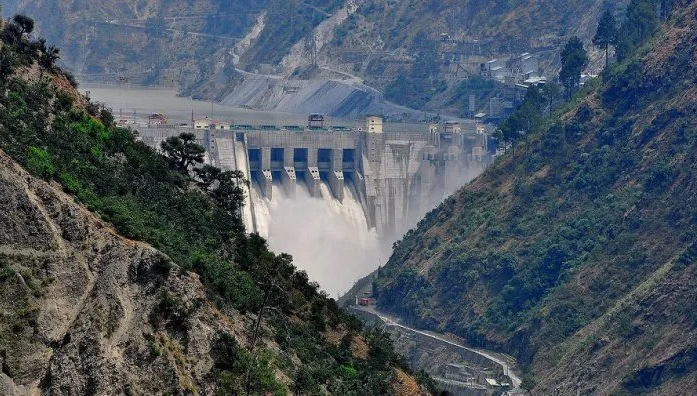Hydro power generation falls by 15 pc in J&K amid dry spell

MASROOR AHMAD
SRINAGAR: Power sector in Jammu and Kashmir has suffered a major setback as hydropower generation has declined by 15 percent. This significant decline has come as a result of prolonged drought and rapid depletion of water levels in local reservoirs, putting pressure on power supply in the Union Territory.
A senior Power Development Department (PDD) official confirmed the magnitude of the issue, saying, “Power generation has witnessed a dip by 15 percent due to less rainfall this summer. If the situation remains the same, the generation will further plummet.”
This 15 percent reduction translates to a considerable shortfall in J&K’s energy production capacity, particularly affecting power plants along the Jhelum and Sindh rivers.
Since the beginning of the year, J&K has experienced a drastic decline in precipitation. From January 1 to July 25, the region recorded a rainfall deficit of 27 percent. This lack of rainfall has led to drought-like conditions and severe heat waves, with Srinagar recently recording a maximum temperature of 35 degrees Celsius.
The official said that power plants along the Jhelum and Sindh rivers are particularly affected by the current conditions. Despite the current power demand in Kashmir, hovering around 1000 MW for most of the day, which is being met through imports from outside discoms, concerns are growing about the sustainability of this arrangement.
“If the situation worsens, it will lead to power cuts,” the official warned.
The impact on hydropower generation is particularly concerning given J&K’s heavy reliance on this energy source .Of the total installed generation capacity of 3500 MW, 1140 MW is contributed by UT-owned plants, including the 900 MW Baglihar Hydro Electric Project (BHEP).
The remaining 2300 MW comes from central sector plants. However, the current dry conditions have reduced the output of these facilities.
The situation becomes even more critical when considering the seasonal variations in power generation. During winters, powerhouses in J&K typically generate a maximum of 600 MW against their rated capacity of 3500 MW due to seasonal drops in water levels.
With the current summer shortfall, there are growing concerns about meeting the peak winter demand, which can reach up to 3200 MW.
To address these challenges, the J&K Government has been actively seeking alternative power sources. New Power Purchase Agreements have been signed to procure additional power, and efforts are being made to diversify the region’s energy mix. With the dip in power production, J&K relies on imports, which leads to huge power bills. According to official data, in the fiscal year 2023-24, the J&K government spent a whopping Rs 9250 crore on power purchases to meet the electricity demand.
“The Jammu and Kashmir Power Corporation Limited (JKPCL) purchased 20,950.58 million units worth Rs 9256.62 crore during the period from April 2023 to March 2024, which were supplied to the Jammu Power Distribution Corporation Limited (JPDCL) and Kashmir Power Distribution Corporation Limited (KPDCL).”
